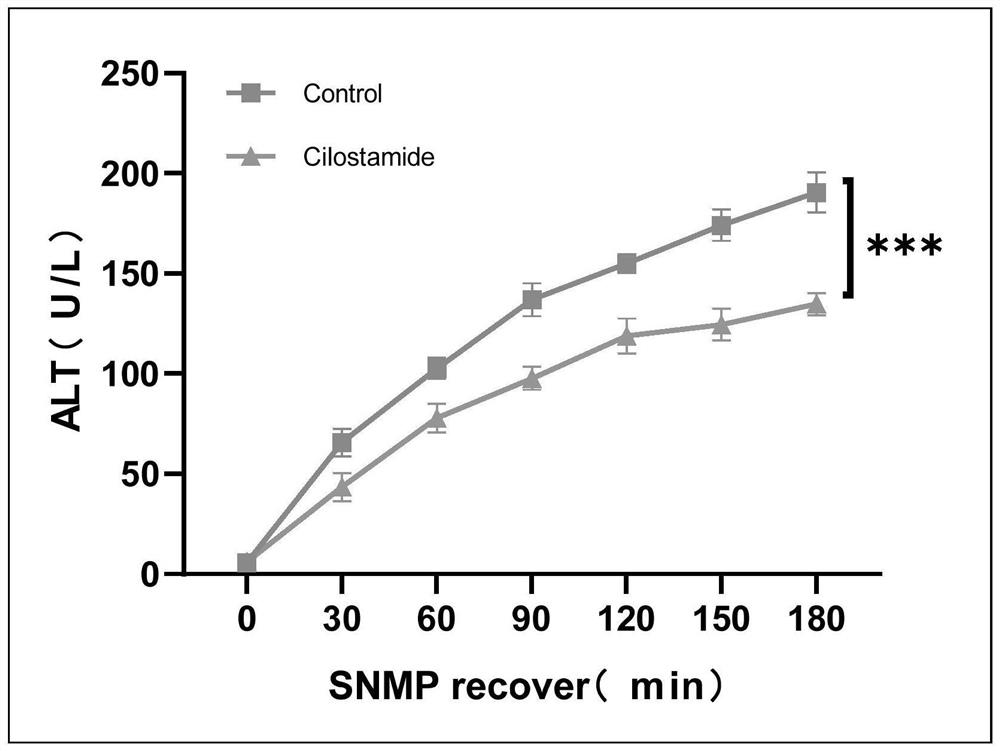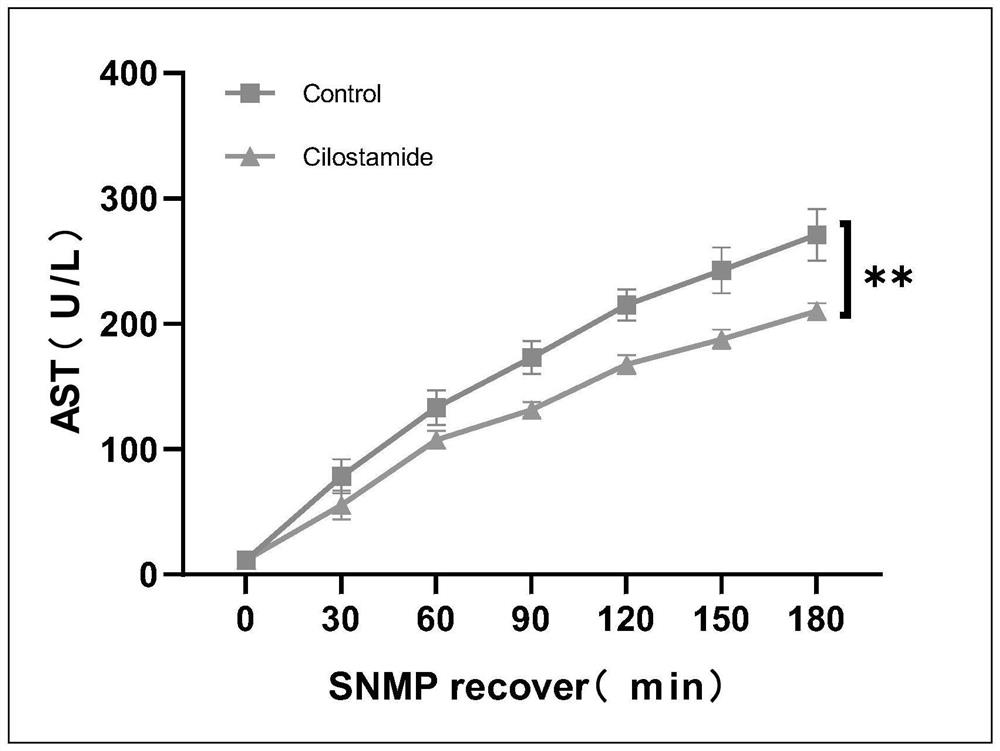Ultralow-temperature preservation solution and preservation method for liver
An ultra-low temperature preservation and low temperature preservation technology, applied in the field of clinical medicine liver transplantation, can solve the problems of difficult to form a unified plan, 8-10 hours, clinical application limitations, etc., to prolong the effective preservation time, improve liver function, improve Save the effect of the effect
- Summary
- Abstract
- Description
- Claims
- Application Information
AI Technical Summary
Problems solved by technology
Method used
Image
Examples
Embodiment 1
[0050] Configure the cryopreservation solution, including the following steps:
[0051] Prepare 500mL loading solution according to the following dosage:
[0052]
[0053] Prepare 1000mL cryopreservation solution according to the following dosage:
[0054]
[0055] Prepare 500mL resuscitation solution according to the following dosage:
[0056]
[0057]
[0058] Use the above three solutions of loading solution, cryopreservation solution and resuscitation solution to sequentially treat the rat liver, and realize the cryopreservation treatment of the rat liver. The specific steps are as follows:
[0059] (1) Loading treatment: After the donor rat liver is obtained, use the isolated rat liver perfusion system to use the loading solution (150 mL) as the perfusion solution, and circulate the donor liver through the portal vein for 50 minutes at room temperature at 18°C , so that the donor liver can fully absorb 3-OMG and Cilostamide, and then at the end of the mechan...
Embodiment 2
[0065] The loading solution, cryopreservation solution and resuscitation solution in this example are different from those in Example 1 above, see Table 1 below.
[0066] Rat livers were cryopreserved, and the specific steps were as follows:
[0067] (1) Loading treatment: After the donor rat liver is obtained, use the isolated rat liver perfusion system, use the loading solution (150 mL) as the perfusion solution, and circulate the donor liver through the portal vein for 60 minutes at room temperature of 19°C , so that the donor liver can fully absorb 3-OMG and Cilostamide, and then at the end of the mechanical perfusion, the temperature is lowered to 3.5°C at a rate of 0.9°C / min by means of a water bath. Typically set the flow rate at 8 mL / min during the first minute of perfusion, monitoring the pressure closely to ensure it does not exceed 10 cmH 2 O(1cmH 2 O=0.098kPa); then slowly increase the flow rate to 12mL / min in increments of 1mL / min, ensuring that the pressure doe...
Embodiment 3
[0073] The loading solution, cryopreservation solution and resuscitation solution in this example are different from those in Example 1 above, see Table 1 below.
[0074] Rat livers were cryopreserved, and the specific steps were as follows:
[0075] (1) Loading treatment: After the donor rat liver is obtained, use the isolated rat liver perfusion system, use the loading solution (150 mL) as the perfusion fluid, and circulate the donor liver through the portal vein for 60 minutes at room temperature of 21°C , so that the donor liver can fully absorb 3-OMG and Cilostamide, and then at the end of the mechanical perfusion, the temperature is lowered to 4°C at a rate of 1.0°C / min by means of a water bath. Typically set the flow rate at 8 mL / min during the first minute of perfusion, monitoring the pressure closely to ensure it does not exceed 10 cmH 2 O(1cmH2 O=0.098kPa); then slowly increase the flow rate to 12mL / min in increments of 1mL / min, ensuring that the pressure does not e...
PUM
 Login to View More
Login to View More Abstract
Description
Claims
Application Information
 Login to View More
Login to View More - R&D
- Intellectual Property
- Life Sciences
- Materials
- Tech Scout
- Unparalleled Data Quality
- Higher Quality Content
- 60% Fewer Hallucinations
Browse by: Latest US Patents, China's latest patents, Technical Efficacy Thesaurus, Application Domain, Technology Topic, Popular Technical Reports.
© 2025 PatSnap. All rights reserved.Legal|Privacy policy|Modern Slavery Act Transparency Statement|Sitemap|About US| Contact US: help@patsnap.com



